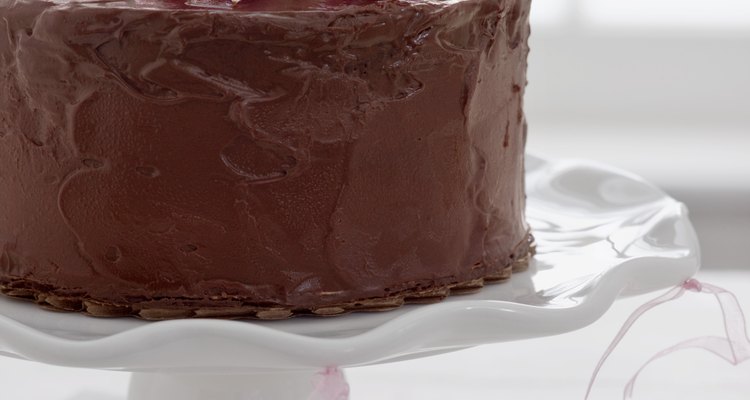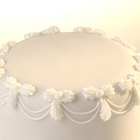
There's no denying that frosting made from scratch tastes significantly better than canned frosting from the baking aisle. Most frosting recipes call for confectioner's sugar, butter, shortening, milk and optional flavoring. Although milk is often the liquid of choice, there's no need to run to the store if you don't have milk in your refrigerator. The milk is only used to dissolve the sugar, so your frosting won't lose any of its flavor without milk.
Step 1
Add confectioner's sugar to a bowl and stir it with a wire whisk to remove any lumps; use a sifter if you have one. Use 1 pound of sugar, or about 4 cups, to make approximately 3 cups of frosting.
Step 2
Cream softened butter, shortening or equal parts of both in a mixing bowl. Beat the butter or shortening with an electric mixer at medium speed until no lumps remain. You'll need about 1 cup of fat for every pound of confectioner's sugar. You can use 1 cup of vegetable shortening, two sticks of butter or 1/2 cup of shortening and one stick of butter. Butter is often used in frosting because of its taste, while shortening is better at holding its shape when you pipe flowers and other decorations onto a cake.
Step 3
Mix in clear vanilla extract, almond extract or a similar flavoring to taste, using about 1 teaspoon of flavoring per pound of confectioner's sugar. Clear vanilla extract doesn't change the frosting color as would happen with brown extracts.
Step 4
Add the confectioner's sugar to the mixing bowl in small batches until all of the sugar is thoroughly incorporated with the butter or shortening. Stop the mixer each time you add sugar or the beaters will throw the powdered sugar out of the bowl.
Step 5
Mix in 2 tablespoons of water for each pound of confectioner's sugar. Use the water as a substitute for milk. Or, instead of water, use orange juice, which also dissolves the sugar but adds some orange flavor to the frosting. Do not use orange juice if you want to make pure white frosting.
Step 6
Mix until the liquid is thoroughly incorporated with the sugar and the mixture forms stiff peaks. The finished frosting should spread easily but hold its shape well.
Step 7
Distribute the frosting to separate bowls for each color you wish to make. Add food coloring gels or powders to color the frosting. Avoid liquid food coloring because the amount of food coloring needed to achieve the desired color often makes the frosting too runny. Skip this step if you only need white frosting.
Related Articles

How to Make Shiny Icing for Cookies ...

How to Make Glaze for Donuts With Milk ...
How to Make Homemade Frosting With ...

How to Lighten Up Burgundy Frosting

How to Make Cake Frosting Into a ...

How to Color White Frosting to Make ...

How to Make Almond Buttercream Frosting

How to Make Drizzle Icing From Frosting ...

How to Make a White Decorator Icing
How to Make White Drizzle Frosting

How to Make Dark Orange Frosting With ...

How to Freeze Dewberries

How to Preserve Fondant

Can I Use a Concealer to Get Nude Lips?

What Colors Do I Mix for Beige Frosting?

How to Make Whipped Frosting Without ...

How to Add Irish Cream to Buttercream ...

Substitutes for Shortening in Frosting

How to Make Marshmallow Creme Smooth ...

Homemade Coconut Pomade
References
Tips
- Butter gives frosting an off-white tint, so use only solid vegetable shortening if you want untinted white frosting.
Writer Bio
A former cake decorator and competitive horticulturist, Amelia Allonsy is most at home in the kitchen or with her hands in the dirt. She received her Bachelor's degree from West Virginia University. Her work has been published in the San Francisco Chronicle and on other websites.
Photo Credits
Creatas Images/Creatas/Getty Images